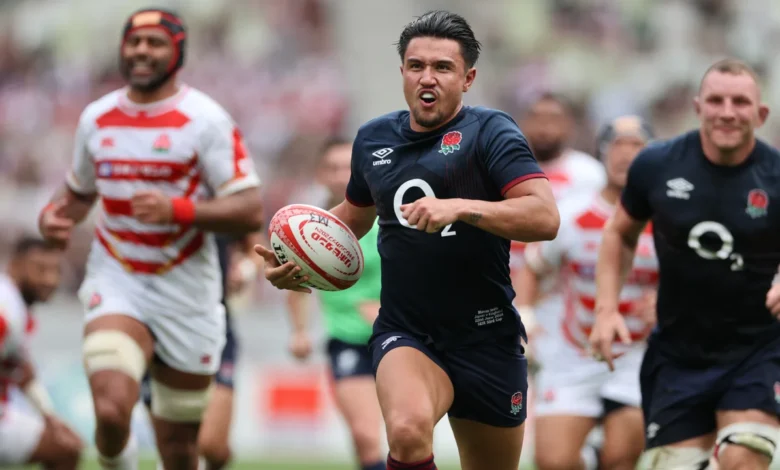The Unrelenting Arena: Exploring England’s National 1 Rugby Union

Nestled just below the professional glare of the Premiership and Championship, National 1 Rugby Union roars with a distinct, visceral energy. As the third tier of the English men’s rugby union pyramid, it represents a crucial battleground where ambition collides with grit, semi-professionalism meets raw passion, and the dream of climbing higher burns fiercely. Far from a mere stepping stone, National 1 is a fiercely competitive league in its own right, boasting intense rivalries, a punishing schedule, and a unique blend of seasoned veterans, aspiring professionals, and committed amateurs. It’s a world where community clubs rub shoulders with ambitious outfits backed by Premiership giants, creating a dynamic and unpredictable sporting landscape that forms the bedrock of the English game. This is where resilience is forged, talent is tested, and the heart of rugby beats strong.
Headings & Explanations:
-
The Crucible of Competition: Structure and Stakes in National 1
National 1 operates as a grueling 16-team league, demanding exceptional consistency over a marathon 30-game season (home and away against each opponent). The format is unforgiving: four points for a win, two for a draw, and crucial bonus points available for scoring four or more tries or losing by seven points or fewer. This system ensures almost every match carries significant weight right until the final whistle. The ultimate prize is promotion to the RFU Championship, awarded automatically to the league champions. The battle doesn’t end there; the runners-up face a nerve-wracking promotion play-off against the second-bottom Championship side. Conversely, the consequences of failure are stark, with the bottom three teams relegated to National 2, plunging clubs into a challenging battle for survival and financial stability each year. This relentless structure creates a pressure-cooker environment where every tackle, every lineout, and every missed conversion can have profound implications for a club’s future. -
Bridging the Gap: Player Development and the Pathway to Professionalism
National 1 serves as an indispensable bridge in the English rugby pathway. For ambitious young players released from Premiership academies or emerging from robust university programs, it offers a vital proving ground. Here, raw talent faces hardened, physical opponents week-in, week-out, learning the demands of senior rugby away from the intense spotlight of the top tiers. Simultaneously, the league provides invaluable game time for experienced professionals in the twilight of their careers or those rebuilding after injury, offering mentorship to the next generation. Crucially, it’s a key destination for dual-registration and loan players from Premiership and Championship clubs. These individuals gain crucial match fitness and experience in a highly competitive environment, accelerating their development before potentially returning to their parent clubs. This constant churn of talent – blending youthful exuberance, seasoned know-how, and players on the cusp of higher honours – makes National 1 a dynamic and essential incubator for the future stars and stalwarts of English rugby. -
Beyond the Pitch: The Financial and Logistical Realities
Operating a National 1 club is a monumental challenge demanding far more than just coaching talent and player skill. Financial sustainability is a constant tightrope walk. While some clubs benefit from significant backing (often linked to a Premiership partner), many operate on tight semi-professional or even predominantly amateur budgets, heavily reliant on gate receipts, local sponsorships, tireless volunteer efforts, and community fundraising. The nationwide spread of the league imposes a brutal logistical burden: lengthy away trips, often requiring overnight stays, strain club resources and impact player recovery. Balancing player commitments – many holding down full-time jobs outside rugby – with the demanding training and travel schedule is another complex feat. Investment in facilities, medical support, and coaching infrastructure is essential but often difficult to secure, creating a significant disparity between the haves and have-nots within the division. Success in National 1 hinges as much on astute off-field management, robust community engagement, and financial prudence as it does on performances on the pitch. -
Engines of Passion: Rivalries, Community, and the Matchday Experience
National 1 thrives on deeply rooted local rivalries and the unwavering passion of its community base. Derbies like Rosslyn Park vs. Blackheath, Rams vs. Chinnor, or Plymouth Albion vs. Taunton Titans ignite fierce pride and draw larger crowds, creating an electric atmosphere often missing in more sanitized professional environments. These rivalries, forged over decades and countless encounters, add an extra layer of intensity to the competition. Matchdays are frequently community events, centred around clubhouses buzzing with conversation, families enjoying the action, and a strong sense of local identity. While crowds may be smaller than the Premiership, the connection between players and supporters is often more intimate and vocal. The rugby itself is typically characterized by high ball-in-play time, powerful forward battles, and attacking ambition as teams chase vital try-scoring bonus points, delivering an entertaining and authentic spectacle that resonates deeply with its loyal fanbase.
Conclusion: The Unyielding Heartbeat of English Rugby
National 1 Rugby Union is far more than just a third division. It is the unyielding heartbeat of the English game, a vital ecosystem where dreams are pursued with relentless determination, communities find a focal point, and the core values of rugby union – resilience, camaraderie, and passion – are fiercely upheld. It operates in the challenging space between the professional elite and the amateur grassroots, demanding immense sacrifice from players, coaches, and administrators alike. While financial pressures and logistical hurdles persist, the league’s significance cannot be overstated. It provides an essential development pathway, a thrilling competitive arena, and a deeply authentic rugby experience. National 1 is where future stars are tempered, where fallen giants rebuild, and where the love of the game shines brightly, week after week, season after season. Its relentless competition and unwavering spirit ensure it remains a fundamental pillar of England’s rugby landscape.
FAQ: National 1 Rugby Union
-
Q: How does promotion and relegation work in National 1?
-
A: The team finishing 1st in National 1 is automatically promoted to the RFU Championship. The team finishing 2nd enters a promotion play-off against the team finishing 11th (second-bottom) in the Championship. The bottom three teams (14th, 15th, 16th) in National 1 are relegated to National 2 (which has two regional divisions, North and South).
-
-
Q: Are National 1 players full-time professionals?
-
A: The league is predominantly semi-professional. While some players, especially at clubs with significant backing or Premiership links, might be full-time, the vast majority balance demanding rugby commitments with full-time jobs or studies. Player payments vary significantly between clubs.
-
-
Q: How can I watch National 1 rugby?
-
A: Attending matches in person is the primary way. Clubs rely heavily on gate receipts. Some clubs stream matches online via their own platforms or services like YouTube. There is limited mainstream TV coverage, though highlights or key games (like the promotion playoff) might occasionally feature.
-
-
Q: What’s the difference between National 1 and the Premiership/Championship?
-
A: The Premiership is the fully professional top tier. The Championship (tier 2) is also professional but with smaller budgets and less media coverage. National 1 (tier 3) is primarily semi-professional, with smaller budgets, larger geographic spread, less media attention, and greater emphasis on player development alongside immediate results.
-
-
Q: Do Premiership clubs have links to National 1 clubs?
-
A: Yes, many do. Premiership clubs often use National 1 clubs for “dual-registration” or loan arrangements. This allows their contracted players (often academy graduates or those returning from injury needing game time) to play regularly in a competitive environment. Some National 1 clubs have formal partnerships with Premiership sides.
-



